Shop our historical maps
News
No DN, half of all inhabitants of Sigtuna were actually not immigrants - and Swedes exist

Aug
Allmogen.org launches Historical. and fact-checks two claims spread in major media about Sigtuna's Viking population composition and about the Swedish majority population.
Daily News, Norrländska Socialdemokraten, Aftonbladet, SVT, TT News Agency and several other major media spread this weekend an identical article that half of all residents of Sigtuna were "immigrants", and that Swedes do not exist. This after a study who investigated remains in a selection of graves in Sigtuna.
Since DN participates in the "fact-checking collaboration" Actually.se I'm surprised they haven't scrutinised themselves in this case, but in recent years I've noticed that there is actually a need for people to scrutinise the scrutinisers as well.
That's why Allmogen now Historical., fact-checking journalism where Allmogen examines claims in the major media about our Swedish history and Nordic culture.
So who is the reviewer reviewing the reviewers? Well, you readers do. As usual, I'm counting on you to let me know if you happen to find anything wrong with the text.
We'll get started right away:
Claim #1:
Half of the inhabitants of Viking Age Sigtuna were immigrants.
Conclusion: Historical. completely false
If you read the study, which apparently no one on the Dagens Nyheter editorial staff has done, you can read that the tooth bone analysis was done on 28 individuals who were excavated - of 800 graves that have so far been excavated in Sigtuna. This is a small sample and according to the study also a "Christian sample".
The results show that about half of the individuals in the study originate from outside Mälaren and can therefore be considered "immigrants". However, the limited sample does not reach a reliable confidence level and cannot be applied to all 800 graves that have been excavated, and even less to all inhabitants who lived in Sigtuna during the study's time frame of 300 years. In order to make such a transfer of the results, it is necessary to include a hefty margin of error, or alternatively to repeat the same test on several hundred individuals.
For example, to be 95% sure that the result is correct (95% confidence level) with a margin of error of ±5% (confidence interval) and for the result to be transferable to all 800 graves excavated, a sample of 260 individuals would be needed, i.e. about 10 times as many individuals as this study analysed.
You can especially not transfer the results to the Mälardalen region in general because cities were extremely rare at this time. Certainly, the population composition in the cities was very different and much more heterogeneous than in the countryside. If I may make a rough estimate, 99% of the people lived outside the cities, scattered in small villages. As late as the 19th century, over 90% of the Swedish common people still lived in the countryside.
The study also performed a full isotope and genome analysis on 16 of these 28 individuals. Of these, 4 were immigrants from the rest of Scandinavia and 4 were long-distance expatriates. Here, the media's use of the term "immigrant" becomes misleading in today's context given the study's narrow geographic scope, where anyone who grew up outside the Mälardalen area is considered "non-local" even if they came from another part of the same Nordic cultural circle.
So where do the immigrants come from according to the study? This is where it gets interesting:
The Sigtuna individuals were widely distributed, with most falling within modern-day variation of Northern Europeans, with the majority of individuals encompassing genomic variation of modern-day individuals from Norway, the North Atlantic Islands, and England. Some samples show stronger tendencies toward modern Eastern, Western, and Central Europeans instead of Northern European populations
Scandinavia, the North Atlantic islands (Faroe Islands, Iceland), England, Eastern Europe. About what you would expect given the well-developed trade networks in the Nordic countries and Europe at the time.
There is no doubt that Sigtuna, as a centre of power for both the church and the king, had well-developed international connections and certainly a lot of immigrant inhabitants both from the rest of the kingdom and from more distant countries. Anything else would be strange, really. But no, DN, the study does not say that half of Sigtuna's inhabitants were immigrants. A correct statement would be to say "Of the limited sample in the study, half of the buried individuals had their origins outside Mälardalen".
Claim #2:
The Swede does not exist genetically.
Conclusion: Historical. completely false
The claim is based on the professor's assumption that "Swedish" means something that is isolated to Ursula, or as DN writes: "The ATLAS project aims to map the genetics of northern Europe - and a major misconception is that it will find something that is isolated to Ursula."
A big misconception? No, it goes without saying that there is no such thing as an isolated Ursula. This part of the world was covered by a kilometre-thick layer of ice for over a hundred thousand years during the last ice age. The ice sheet began to retreat only 12,000 years ago and, believe it or not, no Ursvenian human melted out of the ice sheet. Today's Swedish ethnic group, Sweden's majority population, is the result of 12,000 years of migration.
How the Swedish ethnic group arose can be read about at a light-hearted level in the book The Swedes and their fathers (2016) by Peter Sjölund and Karin Bojs. Swedes, like Norwegians, Finns, Danes and Sami, are a genetically distinct ethnic group that has evolved over hundreds of generations in the Nordic region.
According to Sjölund and Bojs, Swedes are mainly the result of four major migration waves over the past 11,000 years, the last of which occurred during the Bronze Age 3,500 years ago. Since then, immigration to Sweden has been very small, and regional cultures have emerged in the Nordic countries, which over the centuries have increasingly taken the form of a unified Swedish, Norwegian and Danish culture.
A full 40% of all ethnic Swedish men (and up to 26% of Sami men) alive today are descended from the same ancestor, called "Ivar" in the book. His correct name is I1-M253, the mutation carried by all his male descendants in direct descent - including me writing this.
"Ivar", my ancestor, lived in the northern part of what is now Germany and his "sons" immigrated to Sweden in the early Bronze Age 3,500 years ago - according to a hypothesis in connection with an exploding amber trade.
To add to the confusion, and to arouse the anger of local patriotic Scania, the term Swedish has also broadened a lot over the last thousand years, from originally including only the Swedes (mentioned by the Roman Tacitus in 98) to becoming a collective term for all the Nordic tribes incorporated into the Swedish Empire during the often very violent expansion of the Swedish central power's sphere of power.
Today, the term "Swedish" includes Goths and Gypsies, Smålanders and Hessians, Värmlanders and Anglo-Manlanders, but also people like Jämtlanders and Scania, who a few centuries ago belonged to Denmark and Norway (and before that, Jämtland was an independent kingdom). Swedes are one people and many peoples in one, just like Norwegians, Danes, Germans, and others.
In the study Investigation of the fine structure of European populations with applications to disease association studies (Heath, Gut, Brennan, McKay, Bencko, Fabianova et al., 2008) examines the population structure by mapping gene sets of 6,000 individuals across Europe.
The result is clear. Swedes exist:

Looking at more in-depth research of Europe's ethnic groups, we have the study Genome-Wide Analysis of Single Nucleotide Polymorphisms Uncovers Population Structure in Northern Europe (Salmela, Lappalainen, Fransson, Andersen Dahlman-Wright et al., 2008), which examined gene sets in humans in northern Europe and found that the difference between groups was indeed small but still statistically significant, meaning that all groups are closely related but distinct.
Even the researchers in the study Swedish Population Substructure Revealed by Genome-Wide Single Nucleotide Polymorphism Data (Salmela, Lappalainen, Liu, Sistonen, Andersen et al., 2011) notes that Swedes as a population are clearly genetically different from populations in neighbouring countries. At the same time, a clear gradient was observed within the Swedish population, running from south to north, which they attribute to the isolated location of the North and genetic drift.
When Professor Götherström adds that "we have picked up parts from all over the world", we get a little closer to the truth. All humans carry basically the same genes. To 99.9% we are a copy of the person next to us. We also share 96-99% of our DNA with chimpanzees, depending on which study you look at. The final 0.01% of our DNA that separates people groups can be traced to evolutionary development over millennia, where geographical isolation and selective reproduction have led to certain genes being favoured and passed on.
However, there is no doubt among serious scientists that there are closely related yet genetically distinct groups of people in Europe, including Swedes.
Even legally Norrköping District Court has ruled that the majority population, the Swedes, is a ethnic group covered by the legislation on incitement against ethnic groups, even though they also noted that Swedes as a majority group have to put up with more - such as being called "disgusting vermin".
Analysis:
Two statements - two errors. I would recommend Dagens Nyheter and SVT to use their fact-checkers on Faktiskt.se also for their own articles, to avoid such embarrassments.
Those of you who are content to be presented with pure facts and nothing more can stop reading here. However, may I step out of the role of objective fact-checker and put on my analytical hat and ask myself how "agenda-setting" DN and "neutral" SVT can repeatedly commit the same blunder of uncritically spreading this kind of sensational articles, here is an attempt:
Perhaps it is because they let their journalistic objectivity be clouded by their left-liberal, globalist values and intense desire for an "open" and "tolerant" society. Then it is quite natural to let questionable news stories pass without scrutiny as long as they "sound good" and promote the narrative that all immigration is good for Sweden (remember the Sandviken report and all the other countless articles on "immigration benefits" from the last few years), that the kind of abnormal tax-subsidized levels of immigration we see today are nothing new, and that Sweden has always been an idyllic, cosmopolitan multiculture.
Unfortunately, there are also in Sweden today forces within the postmodern and neo-Marxist ideological environment on the far left who want to delegitimize and demoralize the Swedish majority population and deprive us of the knowledge of our history and our culture in order to promote a political agenda and, what else, to "fight SD". A common method of attack is deconstruction, that is to say that you pick apart our history and culture piece by piece and point out that the Christmas tree came from Germany, Santa Claus from Turkey and Donald Duck from the United States, so there is no Swedish Christmas.
They do this by, as Ola Wong has highlighted in several articles in Svenska Dagbladet in recent years, turn Swedish museums into propaganda centres. Also here.
They do this by ideologise cultural heritage and appoint ideologically faithful to managerial positions and Transparency Board.
They do this by, as the head of the agency Ingrid Lomfors at the Forum for Living History did during the 2015 refugee crisis, spread notions that there is "no native Swedish culture" because everything came from outside at some point in time.
Or, as in this article about Sigtuna that is now being spread by DN and SVT, claim that Swedes do not exist because "we have picked up parts from all over the world".
This kind of attack on history feels alien to free societies and is more reminiscent of communist dictatorships where old cultural communities and traditions are seen as standing in the way of socialism's quest to create the new man. Remember the cultural revolution in Mao's China with millions dead. By spreading such biased representations of research results, Dagens Nyheter is playing right into the hands of these totalitarian forces.
Archaeology and the knowledge of one's history have had a strong political value throughout history. In the book Norrland's ancient times (1992), Evert Baudou makes the following observation about the development and importance of archaeological research in the context of the end of oppressive communist states and colonial empires in modern times:
In our days we have seen how many states that have just become free are building up an archaeological research. Of course, one wants to be able to claim a political right to freedom for the country by demonstrating an ancient and independent culture. At the same time, such research creates a basis for a deeper community. One finds one's roots and gains an identity, as the saying goes.
In Sweden, we can see a completely opposite development, where some of the country's largest media and state-funded researchers knowingly and unknowingly spread biased and outright false news that contributes to undermining the Swedish majority population's right to its historical and cultural heritage.
This is another example, like The "Allah" scandal at Uppsala University last year, on how our history is misused for propaganda purposes to normalize and legitimize today's huge tax-subsidized migration movements to Sweden.
This behaviour damages public confidence in both the media and serious research and is thus highly problematic, not to mention highly polarising in an already polarised country.
Allmogen is a religiously and politically independent cultural association that spreads knowledge about our Swedish history and our Nordic common culture. If you appreciate Allmogens's work and want to help us grow, the best way to support us is to becoming a member.
Subscribe to YouTube:
If you appreciate Allmogens independent work to portray our fine Swedish history and Nordic culture, you are welcome to buy something nice in the shop or support us with a voluntary donation. Thank you in advance!
Support Allmogens via Swish: 123 258 97 29
Support Allmogens by becoming a member
Support Allmogens in your will




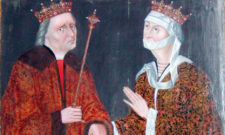
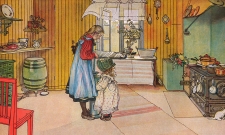
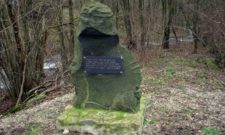
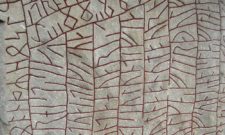
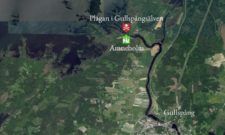
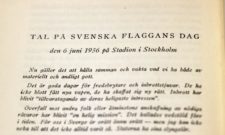
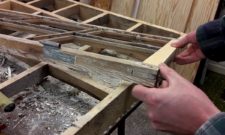

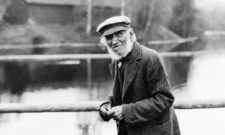
Pingback: DN publishes fake news: half of the inhabitants of Sigtuna were not immigrants | Samhällsnytt
What a great job you put into this! Thank you!
Pingback: radio bubb.la - 28/8 - Theme: Media - radio bubb.la
You write very well.
It is interesting, instructive and very well written.
Bookmarking this page now.
How does it feel to be celebrated by "Samhällsnytt"? They are often considered, even by people other than leftists, to be quite racist. Wouldn't it be smart to think about your choice of words if you want to appear as the religiously and politically independent association you claim to be?
Hi Fia, thanks for your comment! What "word choices" do you think one needs to think about? A lot of people have praised our fact-checks, which is great of course. Whether some of those who praise our work are considered "racist" or not is of course not relevant to our continued work in conducting objective fact-checking.
I too feel bad when they try to take away our heritage. I belong to the original Swedes myself, genetically we have the same ancestor. Why deny us our heritage? Would anyone deny the heritage of the Indians today, for example? Or any other indigenous people?
Frightening development. Thank you for your work!
Incredibly interesting and good writing..looking forward to the newsletters to come.
I'm so tired of being labelled racist because I want to protect the cultural heritage we have. Believe we owe it to future generations to preserve the knowledge of the past.
Hi Daniel, today I became a member. I was so happy when I discovered Allmogen. What an incredible job you put into all the enlightenment about Swedish culture. Pedagogically, with great knowledge and love for the fatherland you guide us all over the country to different historical places. Your videos are great. You are knowledgeable and very wise. Never mind the discrediting and slander from left wing liberals and others from the 68 left. We need you. Genetically I belong to Slavic people in the East, but have lived here for 50 years. I love Sweden as my second home and support all good forces to preserve Swedish culture. You have my support. Liba